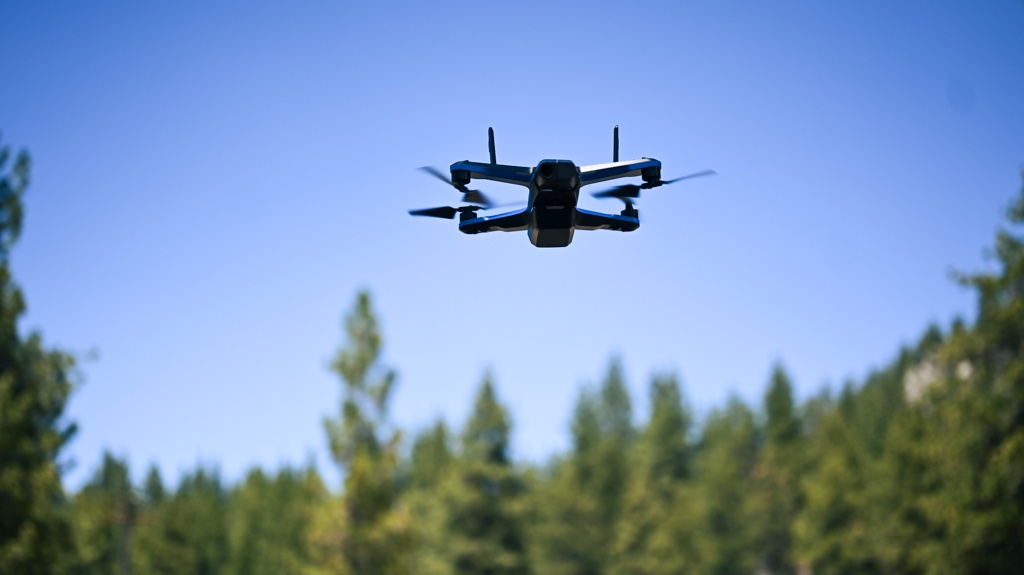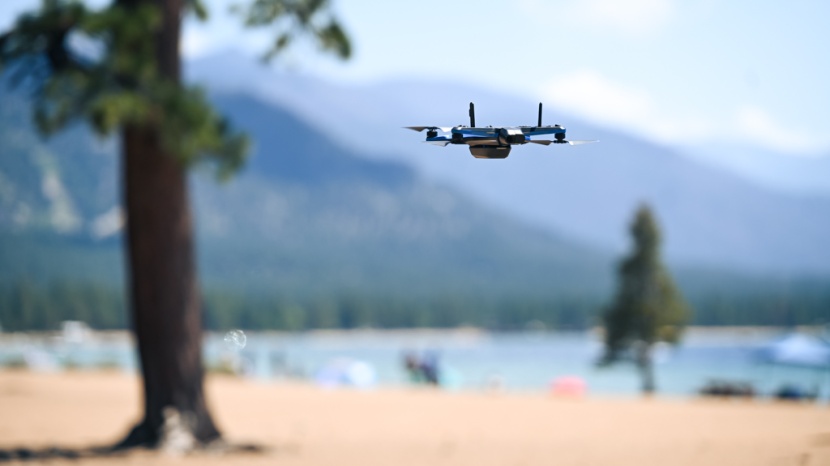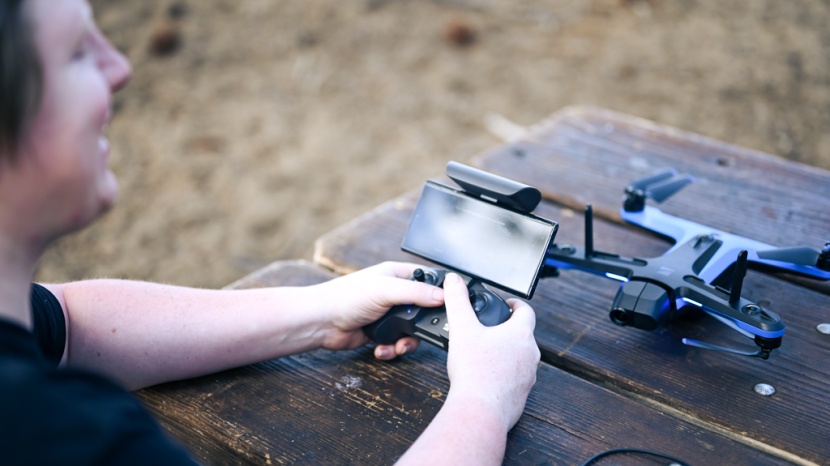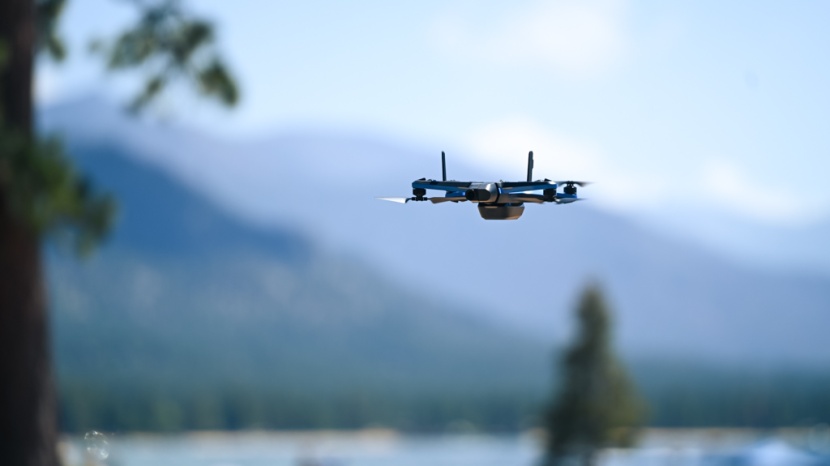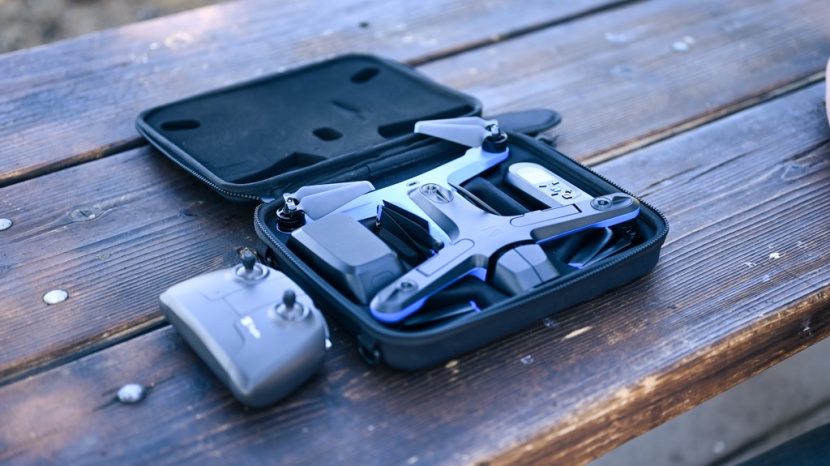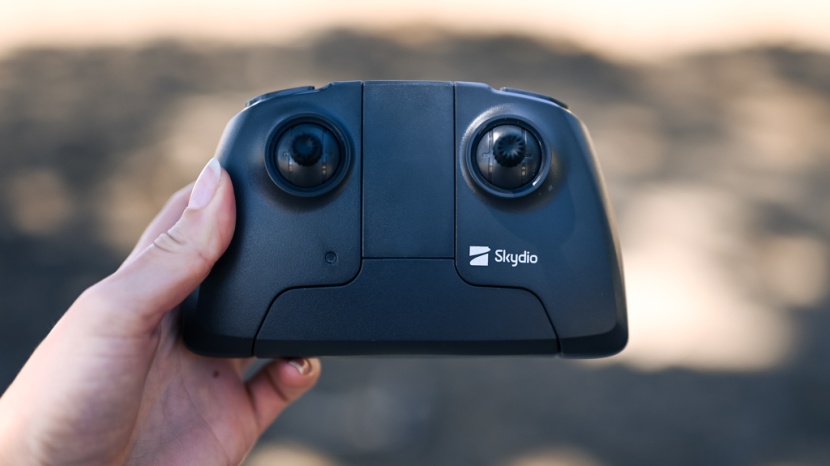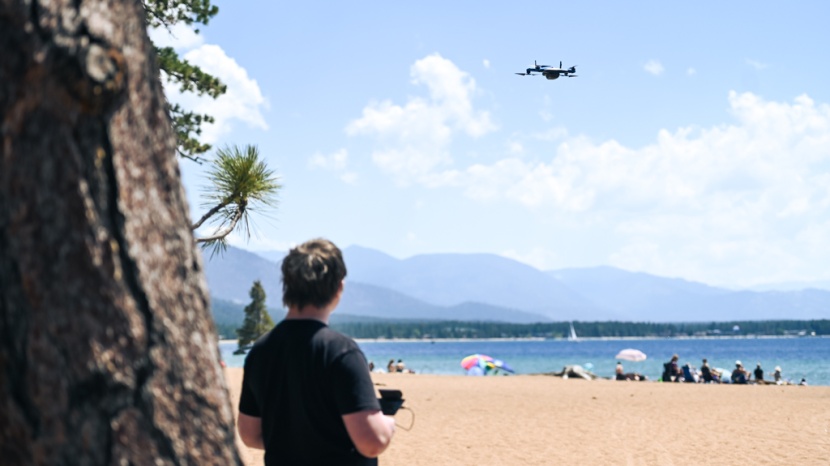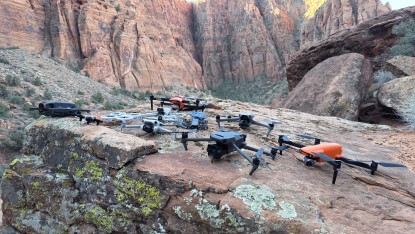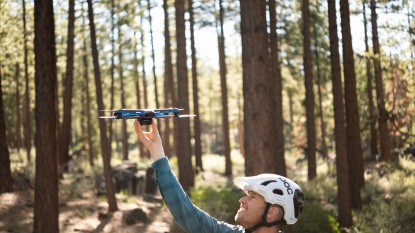
Our Verdict
Our Analysis and Test Results
If you are lukewarm on fancy drone stunt flying but want a reliable, easy-to-program flying platform, then the Skydio 2+ will greatly appeal to you. This drone wowed testers with its superb programming and easy-to-navigate user interface. Read on for the details of our in-depth, hands-on testing.
Video Quality
Our assessment of the Skydio 2+ takes a deep dive into the particulars of video quality, including details such as low and high light film quality, detailed landscape shots, and gimbal stabilization. Overall, the Skydio 2+ delivered a slightly above-average performance in this assessment despite having a maximum video resolution of 4K. That being said, drones today are quite sophisticated, and an average score in a class of high-quality devices indicates an excellent product.
When assessing the Skydio 2+ for the details present in complex shots like those rendered when filming in a forest, its 4K resolution proved to be reasonably sharp. Some loss of sharpness and detail is evident in highly detailed scenes, though the drone nonetheless produces very usable footage, which mitigates the effect of lower resolution. This, in large part, is thanks to the gimbal. Our test of camera stabilization showed the Skydio 2+ to be very smooth, but this result depended on it being flown in optimal conditions — specifically, with little to no wind.
Our video quality analysis also included the effects of shooting in high and low light. When aiming the camera into the sun, we got a good representation of the unit's highlight retention and dynamic range. The Skydio 2+ displayed harsh highlight roll-off in this scenario and poor highlight retention and dynamic range compared to other top models in the class.
As for the low light test, we found that the higher ISO settings were useful, but there was a slight degradation in image quality, sharpness, and the introduction of noise, particularly in shadows. Finally, we could not find tunable yaw control, which, unfortunately, negatively affects smooth panning and thus video quality in this common filming style.
Flight Performance
Flight performance impacts all aspects of drone usage, including, as we have seen, video quality. As with the video quality assessment, the flight performance metric covers a lot of ground. This metric looks at landing and takeoff, intelligent flight programming, stability, battery life, and video transmission. All told, the Skydio 2+ earned an average score in this assessment. However, it excelled in intelligent flight, which is a boon for users focusing on action sports where automated flying is key.
Looking at takeoff and landing assessment first, we see that the Skydio 2+ is very stable and easy to manage as the opening and closing stages of the drone's flight are automated. This automation can be quite helpful for novice pilots as takeoff and landing can be challenging given the necessary proximity to the ground and other low-lying obstacles. However, the push-button takeoff and landing protocols are problematic if adjustments need to be made during these stages of flight, such as are necessary for windy flying conditions.
While the Skydio 2+ displayed stable and predictable flight in low wind scenarios, we observed some unexpected stability loss when analyzing the unit's hovering capabilities. Moreover, we found the controls to be a touch sluggish in their responsiveness to pilot inputs. While we never lost control of the drone — far from it — these limitations and idiosyncrasies can negatively affect video quality and pilot satisfaction.
Our assessment of flight performance also includes battery life and video transmission. The Skydio 2+ has a middling battery life of 27 minutes, but, happily, its batteries are swappable and compatible with the previous model (Skydio 2). Additionally, the unit's video transmission is smooth with a sharp picture up to 1,000 feet — macro blocking in signal became evident when the drone flew beyond this radius.
Finally, we looked at intelligent flight performance. This assessment covers the programmable flight patterns such as orbiting a point of interest, waypoint or cable cam flight, return home and the action sport favorite: follow mode. The orbit/point of interest flight is quite good, with an intuitive interface that makes it easy for the user to activate by selecting the subject of interest. Similarly, the following mode quickly recognizes a user-selected subject via a simple and intuitive menu.
The cable cam function is also very good. This program allows the user to predefine a route for the drone to follow while automatically avoiding obstacles. We found this function intuitive to set while rendering smoothly executed shots. Finally, the emergency return home feature left users with nothing to report — no news is good news. When commanded to return home, the drone moves to a position at 295 feet and then returns to within 20 feet of the launch point or phone position — the user decides which. From this position, the drone hovers 20 feet off the ground and waits for further instructions.
Portability
While not nearly as important as flight performance and video quality, the portability of a drone is nonetheless a key element in assessing these products, as one rarely uses them exclusively at their storage location.
The Skydio 2+ weighs in at 1.73 pounds and is 13 inches measured diagonally (it does not fold up). The unit comes with a case that holds the drone, two batteries, and spare props (though not the charger). However, the Pro Kit option comes with a much nicer case with more storage for extra batteries — it is bulky but has a hard shell and lots of protective padding.
Ease of Use
While today's drones have resolved many of the problems that previously plagued new pilots, there are still concerns about these products ease of use. We like to investigate this so that you will know the difficulties (or lack thereof) that must be surmounted when setting up and mastering a new drone. The Skydio 2+ requires no assembly and is ready to fly right out of the box. The control interface — which includes a beacon, phone, and remote controller — is nicely balanced if a bit small for larger hands, and the buttons are easily reachable. The GUI (Graphical User Interface) is well laid out with intuitive features.
The video quality of the interface is quite good, and we also found the imagery on the screen to be true to the video being recorded. The video downlink is smooth and sharp up to 1,000 feet, though the maximum transmitting distance is 3.73 miles.
As far as ease of learning to fly the Skydio 2+ is concerned, we encountered no issues except when managing yaw — it was unusually difficult compared to other drones we have tested. Despite these limitations, this drone is a breeze to set up, program, and operate.
Value
While the Skydio 2+ is not an inexpensive device, it is not out of sync with the market. However, in general, this unit does not perform as well as others in its price range. There is one big exception to this assessment, and that is in the area of autonomous flight. The Skydio 2+ excels in this category, and if these features are what you are looking for in a drone, it's more than worth the asking price.
Conclusion
The Skydio 2+ delivered an average performance in our overall assessment. However, it is a standout for autonomous flight. If you are seeking features like follow mode, cable cam, orbit, and hover, this unit will appeal to you. The interface and programming make setting up and activating these features very straightforward and effective, and the video results really do speak for themselves. Taken as a whole, this is a well-thought-out product that focuses on autonomous flight over pilot-driven maneuvering.


